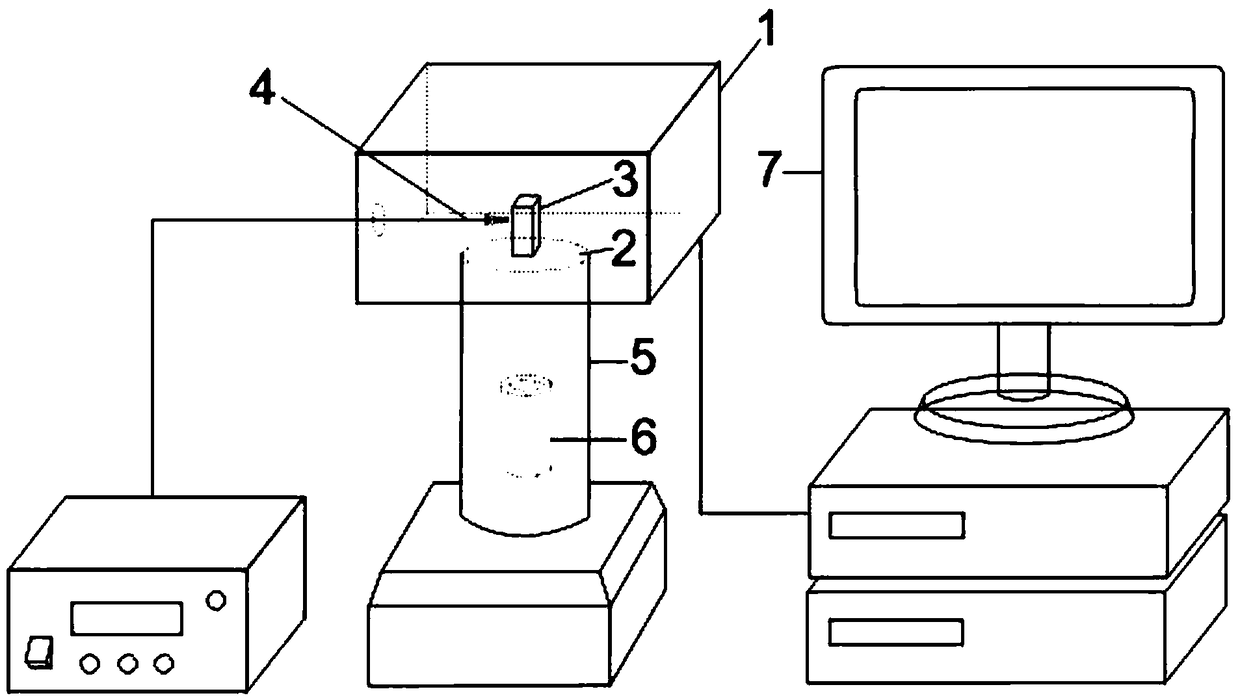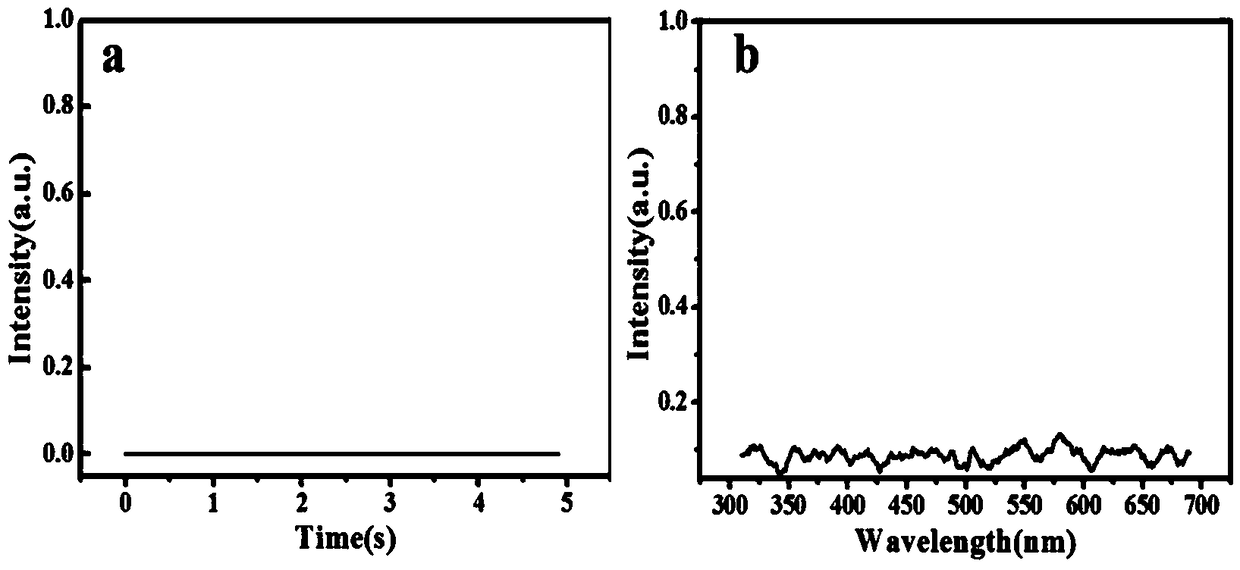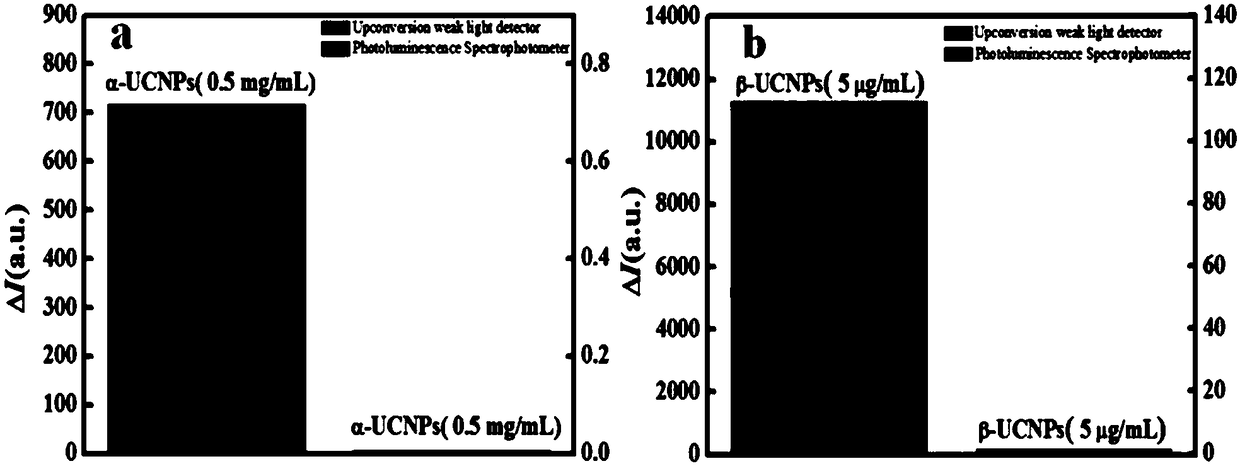Construction of up-conversion weak light detector and application thereof in detecting glutathione
A glutathione, weak light technology, applied in instruments, measuring devices, scientific instruments, etc., can solve the problems of high experimental requirements, time-consuming and labor-intensive
- Summary
- Abstract
- Description
- Claims
- Application Information
AI Technical Summary
Problems solved by technology
Method used
Image
Examples
example 1
[0049] Based on the MPI-E electrochemiluminescence detector for transformation. Such as figure 1 As shown, the present invention provides an up-conversion weak light detector comprising a sample chamber 1 in the upper part. There is a detection pool at the bottom of the sample chamber 1. The detection pool is provided with a quartz window 2. The quartz window 2 is located in the sample chamber 1. A cuvette 3 is provided directly above the laser, the probe 4 of the laser is introduced into the sample chamber, and the position of the probe 4 is perpendicular to the cuvette 3 and then fixed. A vacuum chamber 5 is connected below the sample chamber 1, and a photomultiplier tube 6 is in the In the vacuum chamber 5 and facing the quartz window 2, the up-converted fluorescence passes through the cuvette 3 and the quartz window 2 at the bottom of the sample chamber, and then is collected through the photomultiplier tube 6, and then transferred to the computer system 7 for data process...
example 2
[0051] Preparation of α-phase OA-UCNPs: Take a clean three-necked flask, add 4 mL of oleic acid (OA), 15 mL of octadecene (ODE), prepared rare earth stearate (Y, Yb, Er) 1 mmol, NaF 20 mmol, heated under reflux to 135~145°C for 30min to dehydrate and degas to form a clear liquid. Then the temperature was raised rapidly, and the reaction temperature was maintained at 298~302°C for 30 minutes. After the reaction, cool to room temperature. The obtained product was centrifuged (11000 r / min), and the supernatant was discarded after the centrifugation, and the centrifuged precipitate was retained, and the precipitate was washed several times with cyclohexane, ethanol, and distilled water, and vacuum-dried at 70°C for later use.
[0052] Preparation of β-phase OA-UCNPs: Take a clean three-necked flask, add 12 mL of oleic acid (OA), 8 mL of octadecene (ODE), and 0.8 mmol of the prepared rare earth stearate (Y, Yb, Er) , NaF 28 mmol, heated under reflux to 135~145°C for 30 min to deh...
example 3
[0056] The performance of the up-conversion weak light detector prepared by example 1 is studied. At first, the signal-to-noise ratio of the two instruments is compared, as figure 2 As shown, a and b in the figure are the noise maps of the up-conversion weak light detector and the fluorescence spectrophotometer when testing the blank sample, respectively. Under the same test conditions (voltage: 500 V, excitation power: 0.25 W / cm 2 ), the baseline of the up-conversion weak light detector is a straight line, but the baseline of the fluorescence spectrophotometer has obvious jitter, indicating that the detection performance of the up-conversion weak light detector is better than that of the fluorescence spectrophotometer.
[0057] The α-phase UCNPs prepared in Example 2 were formulated into a 0.5 mg / mL aqueous solution, and the β-phase UCNPs were formulated into a 5 μg / mL aqueous solution, and the excitation power was 0.5 W / cm 2 , under the condition of a voltage of 500 V, det...
PUM
 Login to View More
Login to View More Abstract
Description
Claims
Application Information
 Login to View More
Login to View More - R&D
- Intellectual Property
- Life Sciences
- Materials
- Tech Scout
- Unparalleled Data Quality
- Higher Quality Content
- 60% Fewer Hallucinations
Browse by: Latest US Patents, China's latest patents, Technical Efficacy Thesaurus, Application Domain, Technology Topic, Popular Technical Reports.
© 2025 PatSnap. All rights reserved.Legal|Privacy policy|Modern Slavery Act Transparency Statement|Sitemap|About US| Contact US: help@patsnap.com



